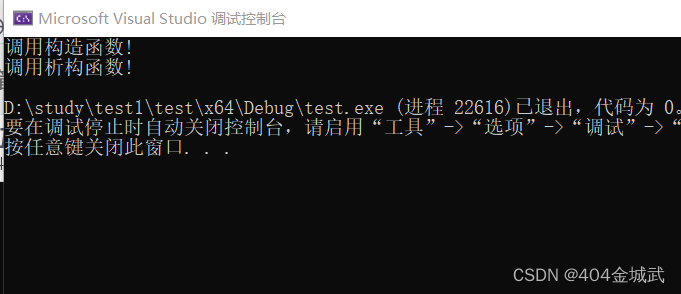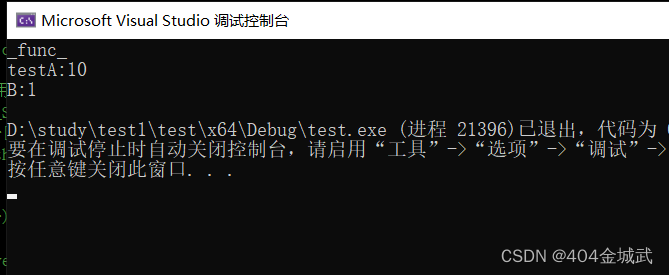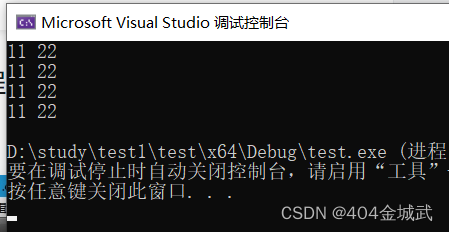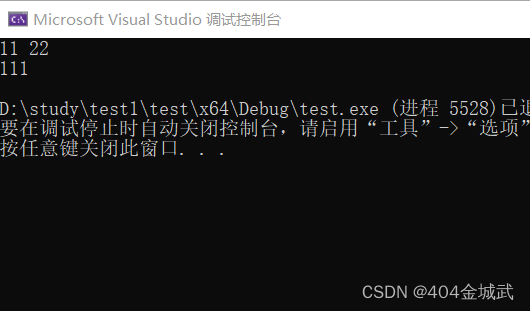1.返回值优化技术
返回值优化技术本质上就是移动语义的应用,在代码运行中为了维护临时对象,对产生大量的创建和销毁等操作,严重影响运行性能,使用移动语义可以直接将右值过渡给目标对象,类似于剪切而不是复制,不用反复地调用构造和析构函数。
class String {
public:
String() = default;
String(const char* string)
{
std::cout << "调用构造函数!" << std::endl;
m_Size = strlen(string);
m_Data = new char[m_Size];
memcpy(m_Data, string, m_Size);
}
String(const String& other)
{
std::cout << "调用拷贝函数!" << std::endl;
m_Size = other.m_Size;
m_Data = new char[m_Size];
memcpy(m_Data, other.m_Data, m_Size);
}
~String()
{
std::cout << "调用析构函数!" << std::endl;
delete m_Data;
}
private:
char* m_Data;
int m_Size;
};
String func()
{
String s("返回");
return s;
}
int main()
{
String result = func();
return 0;
}

此时func()函数是将对象s利用拷贝构造函数赋值给一个临时变量作为返回值,但是这个临时返回值并再调用拷贝构造函数赋值给result,而是直接将内容过渡给了result,两次调用析构函数实际上第一次是析构s,第二次是析构临时变量(result)
进一步优化可以使用move函数
String&& func()
{
String s("返回");
return std::move(s);
}
int main()
{
String&& s = func();
return 0;
}

2.闭包
闭包:闭包是带有上下文的函数,闭包的状态捆绑,必须发生在运行时。
闭包实现的方式:
- 仿函数:重载 operator()
- std::bind绑定器
- lambda表达式
1.仿函数:重载 operator()实现闭包
仿函数:仿函数就是使用函数对象代替函数指针
class Myfunc
{
public:
Myfunc(int x,int y):x(x),y(y){}
int operator()(int z)
{
return (x+y)*z;
}
private:
int x;
int y;
};
int main()
{
Myfunc mul(2, 5);
cout << mul(3) << endl;
return 0;
}
 2.bind绑定器
2.bind绑定器
- std::function
function<函数返回类型(参数类型)>
头文件:#include < functional >
void func()
{
cout << "_func_" << endl;
}
class A
{
public:
static int testA(int a)
{
cout << "testA:" << a << endl;
return a;
}
};
class B
{
public:
int operator()(char b)
{
cout << "B:" << b - 'a' << endl;
return b - 'a';
}
};
int main()
{
function<void()> f1 = func;
f1();
function<int(int)> f2 = A::testA;
f2(10);
B b;
function<int(char)> f3 = b;
f3('b');
}

2.bind绑定器
void func(int x, int y)
{
cout << x << " " << y << endl;
}
int main()
{
bind(func, 11, 22)();
bind(func, std::placeholders::_1, std::placeholders::_2)(11, 22);
using namespace std::placeholders;
bind(func, 11, _1)(22);
bind(func, _2, 22)(22,11);
return 0;
}
_1表示被传进来的第一个参数所替换,_2表示被传进来的第二个参数所替换

3.bind和function结合使用
using namespace std;
using namespace std::placeholders;
class Test
{
public:
void func(int x, int y)
{
cout << x << " " << y << endl;
}
int a;
};
int main()
{
Test obj;
//绑定成员函数
function<void(int, int)> f1 = bind(&Test::func, &obj, _1, _2);
f1(11, 22);
function<int &()> f2 = bind(&Test::a, &obj);
f2() = 111;
cout << obj.a << endl;
}






















 5434
5434











 被折叠的 条评论
为什么被折叠?
被折叠的 条评论
为什么被折叠?








